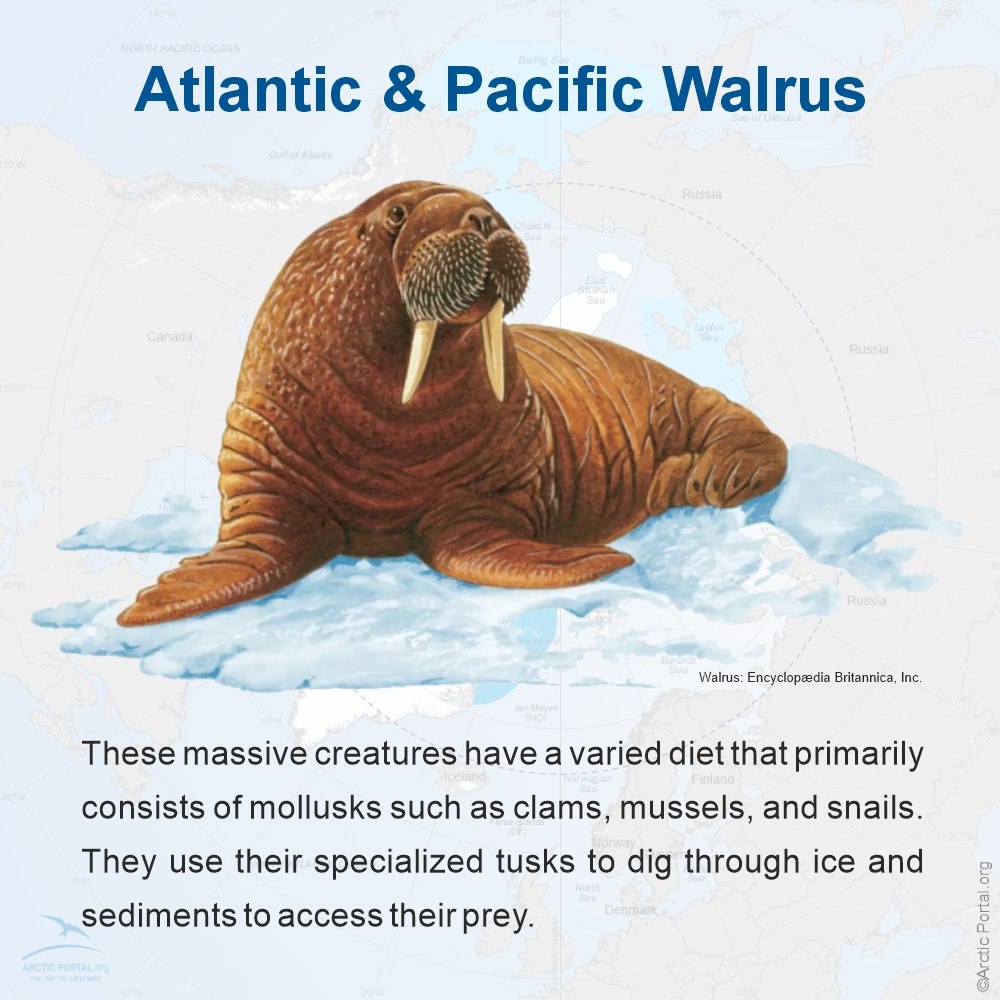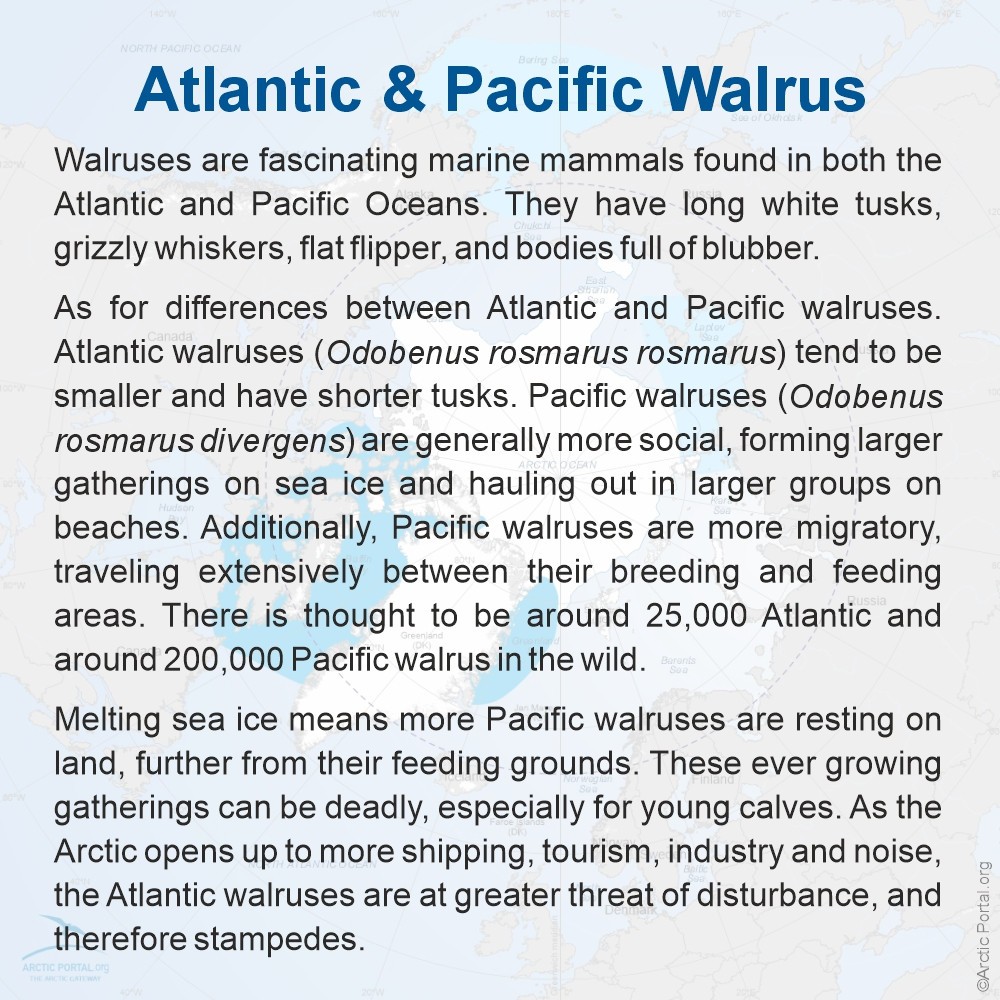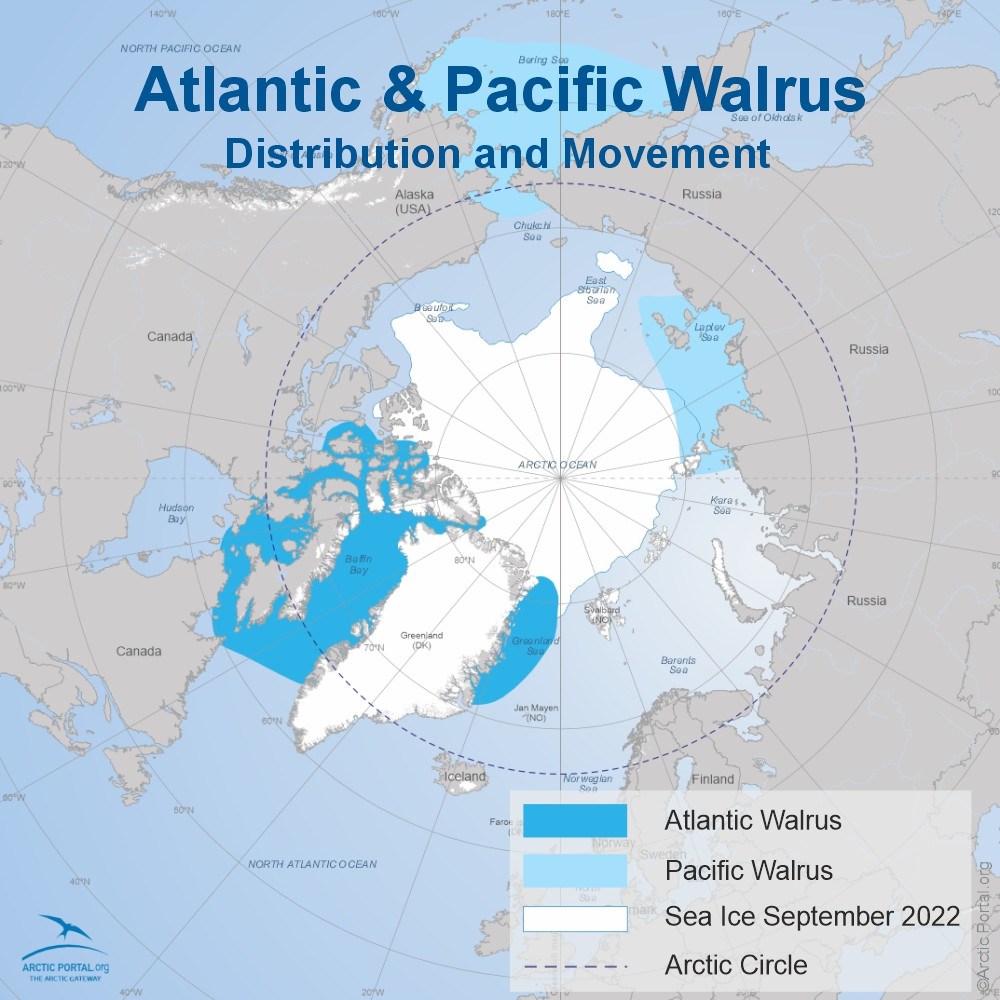These massive creatures have a varied diet that primarily consists of mollusks such as clams, mussels, and snails. They use their specialized tusks to dig through ice and sediments to access their prey.
These massive creatures have a varied diet that primarily consists of mollusks such as clams, mussels, and snails. They use their specialized tusks to dig through ice and sediments to access their prey.
Walruses are fascinating marine mammals found in both the Atlantic and Pacific Oceans. They have long white tusks, grizzly whiskers, flat flipper, and bodies full of blubber.
As for differences between Atlantic and Pacific walruses. Atlantic walruses (Odobenus rosmarus rosmarus) tend to be smaller and have shorter tusks. Pacific walruses (Odobenus rosmarus divergens) are generally more social, forming larger gatherings on sea ice and hauling out in larger groups on beaches. Additionally, Pacific walruses are more migratory, traveling extensively between their breeding and feeding areas. There is thought to be around 25,000 Atlantic and around 200,000 Pacific walrus in the wild.
Melting sea ice means more Pacific walruses are resting on land, further from their feeding grounds. These ever growing gatherings can be deadly, especially for young calves. As the Arctic opens up to more shipping, tourism, industry and noise, the Atlantic walruses are at greater threat of disturbance, and therefore stampedes.
See also our map on Atlantic & Pacific Walrus Distribution and Movement
Visit our Map Gallery Arctic Portal specializes in creating customized graphical maps that cover a range of significant Arctic topics with global recognition. We are continuously working on new maps and adding them to our Gallery.



